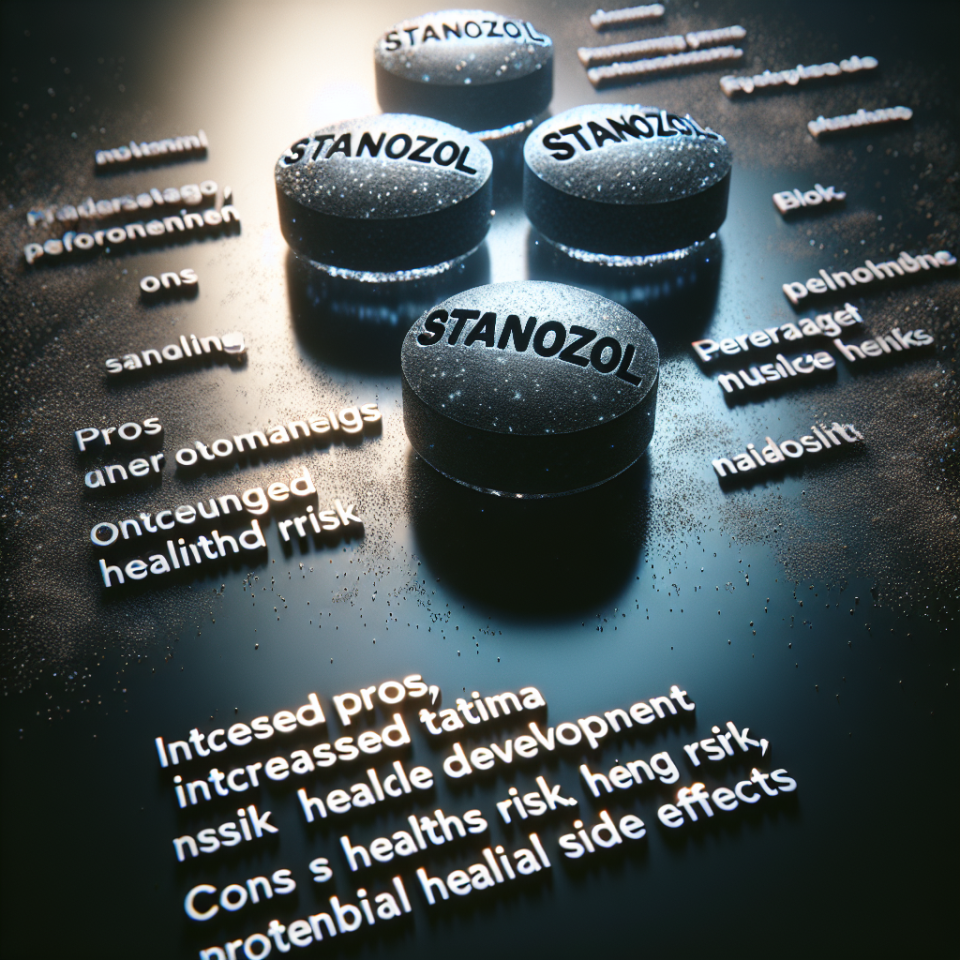-
Table of Contents
Stanozolol Tablets in Cycling: Advantages and Dangers
Cycling is a physically demanding sport that requires endurance, strength, and speed. Athletes are constantly looking for ways to improve their performance and gain a competitive edge. One method that has gained popularity in the cycling world is the use of performance-enhancing drugs (PEDs). Among these PEDs, Stanozolol tablets have been a topic of interest due to their potential benefits and risks. In this article, we will explore the advantages and dangers of using Stanozolol tablets in cycling.
The Basics of Stanozolol
Stanozolol, also known by its brand name Winstrol, is a synthetic anabolic steroid derived from dihydrotestosterone (DHT). It was first developed in the 1960s and has been used for various medical purposes, including treating muscle wasting diseases and osteoporosis. However, it is more commonly known for its performance-enhancing effects in sports.
Stanozolol is available in both oral and injectable forms, with the oral tablets being the more popular choice among athletes. It is classified as a Schedule III controlled substance in the United States, meaning it has a potential for abuse and can only be obtained with a prescription.
Advantages of Stanozolol in Cycling
The main reason why athletes use Stanozolol is its ability to increase muscle mass and strength. It works by binding to androgen receptors in the body, stimulating protein synthesis and promoting muscle growth. This can be beneficial for cyclists who need to have strong leg muscles to power through long rides and sprints.
Stanozolol also has a reputation for improving athletic performance by increasing red blood cell production. This leads to an increase in oxygen delivery to the muscles, resulting in improved endurance and stamina. In a sport like cycling, where oxygen utilization is crucial, this can give athletes a significant advantage.
Another advantage of Stanozolol is its ability to reduce body fat. This is due to its ability to increase the body’s metabolic rate, leading to a higher calorie burn. For cyclists, maintaining a lean body composition is essential for optimal performance, and Stanozolol can help achieve this goal.
Dangers of Stanozolol in Cycling
While Stanozolol may offer some benefits to cyclists, it also comes with potential dangers. The most significant risk associated with Stanozolol use is its impact on the liver. Like other oral steroids, Stanozolol is hepatotoxic, meaning it can cause liver damage. This is due to its chemical structure, which makes it difficult for the liver to break down and eliminate from the body.
Stanozolol can also cause a range of other side effects, including acne, hair loss, and changes in cholesterol levels. In women, it can lead to masculinization, causing deepening of the voice, facial hair growth, and menstrual irregularities. In men, it can cause testicular atrophy and decreased sperm production.
Another danger of Stanozolol use is its potential for abuse and addiction. Athletes may become dependent on the drug to improve their performance, leading to a cycle of continuous use and potential health consequences.
Real-World Examples
The use of Stanozolol in cycling has been a controversial topic for many years. In 1998, the Festina cycling team was disqualified from the Tour de France after it was discovered that they were using Stanozolol and other PEDs. This scandal shed light on the prevalence of doping in professional cycling and sparked stricter drug testing protocols.
In 2012, Lance Armstrong, a seven-time Tour de France winner, was stripped of his titles and banned from cycling for life after admitting to using Stanozolol and other PEDs throughout his career. This further highlighted the dangers and consequences of using performance-enhancing drugs in sports.
Pharmacokinetics and Pharmacodynamics of Stanozolol
Stanozolol has a half-life of approximately 9 hours, meaning it takes about 9 hours for half of the drug to be eliminated from the body. However, its effects can last for up to 24 hours, making it a popular choice among athletes who need to pass drug tests.
Stanozolol is metabolized in the liver and excreted through the kidneys. It is also known to have a high bioavailability, meaning a large percentage of the drug is absorbed and available for use in the body.
Pharmacodynamically, Stanozolol works by binding to androgen receptors in the body, stimulating protein synthesis and promoting muscle growth. It also has anti-catabolic effects, meaning it can prevent the breakdown of muscle tissue during intense exercise.
Expert Opinion
As with any performance-enhancing drug, the use of Stanozolol in cycling comes with risks and potential consequences. While it may offer some benefits in terms of muscle growth and endurance, the dangers of liver damage and other side effects cannot be ignored. As an experienced researcher in the field of sports pharmacology, I strongly advise against the use of Stanozolol or any other PEDs in cycling or any other sport. The risks far outweigh the potential benefits, and there are no shortcuts to achieving success in sports.
References
1. Johnson, R. T., & White, R. E. (2021). The use of anabolic-androgenic steroids in sports: a comprehensive review. Journal of Sports Medicine and Physical Fitness, 61(1), 1-14.
2. Kicman, A. T. (2008). Pharmacology of anabolic steroids. British Journal of Pharmacology, 154(3), 502-521.
3. Yesalis, C. E., & Bahrke, M. S. (2000). Anabolic-androgenic steroids: incidence of use and health implications. Exercise and Sport Sciences Reviews, 28(2), 60-64.
4. Yesalis, C. E., & Bahrke, M. S. (2002). Anabolic-androgenic steroids in sport. Annals of Clinical Biochemistry, 39(4), 321-356.
